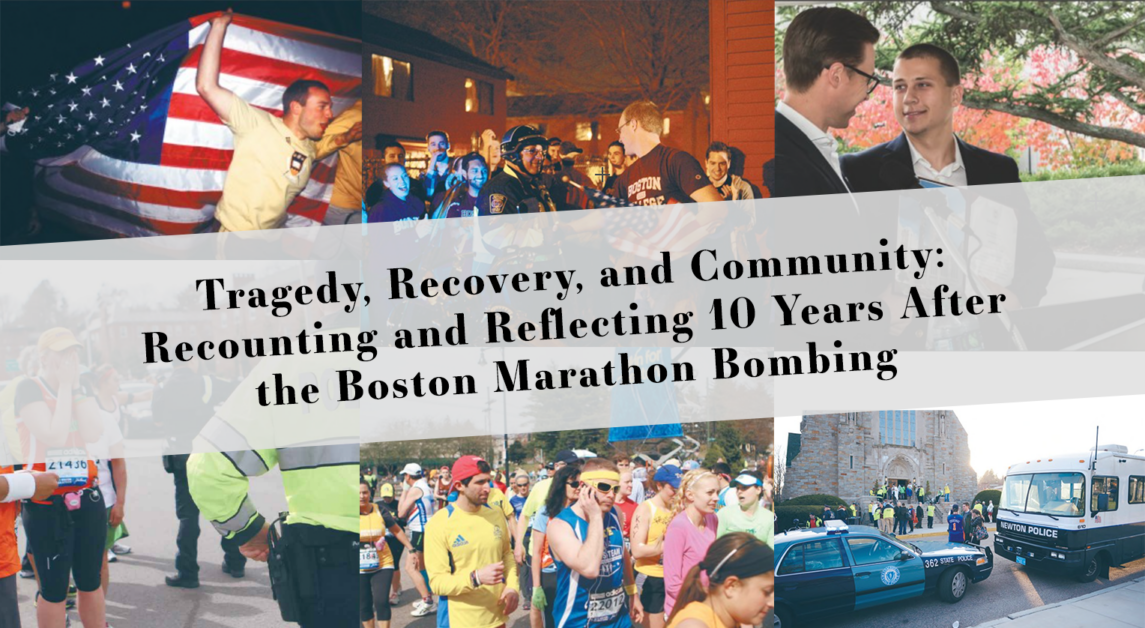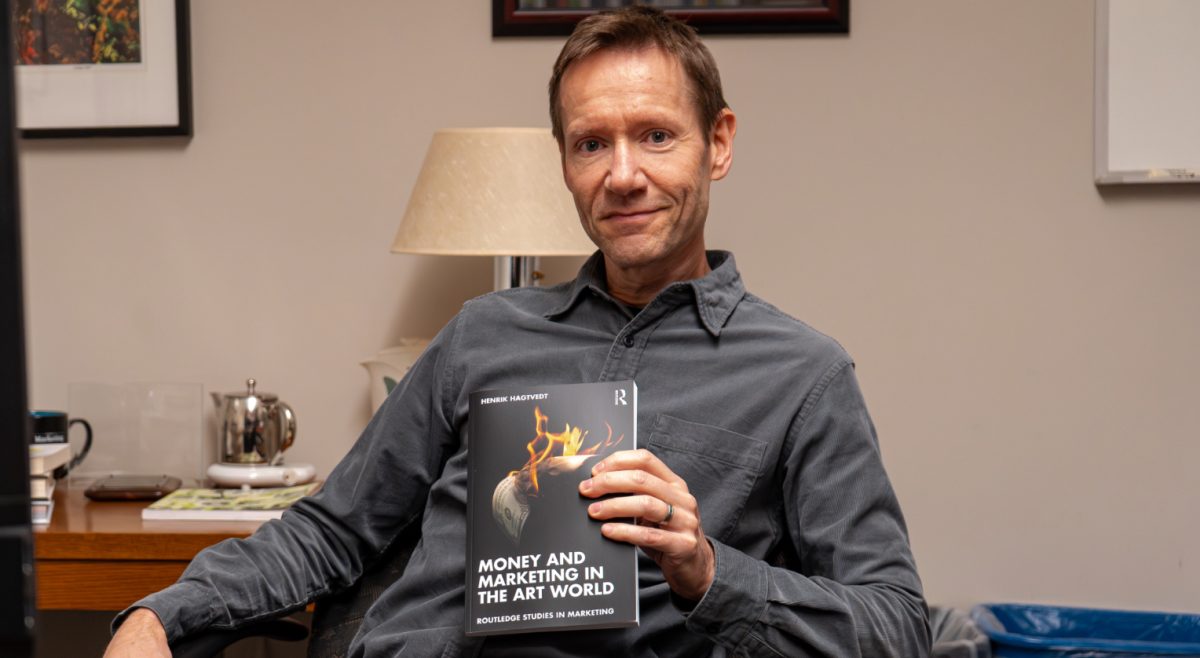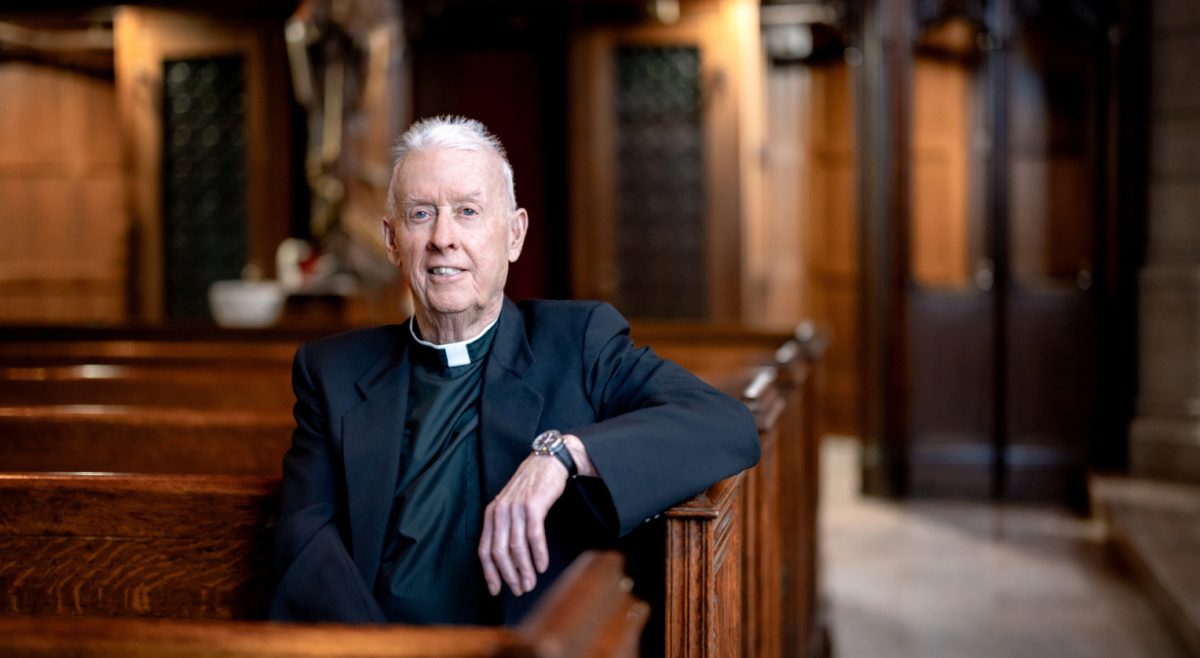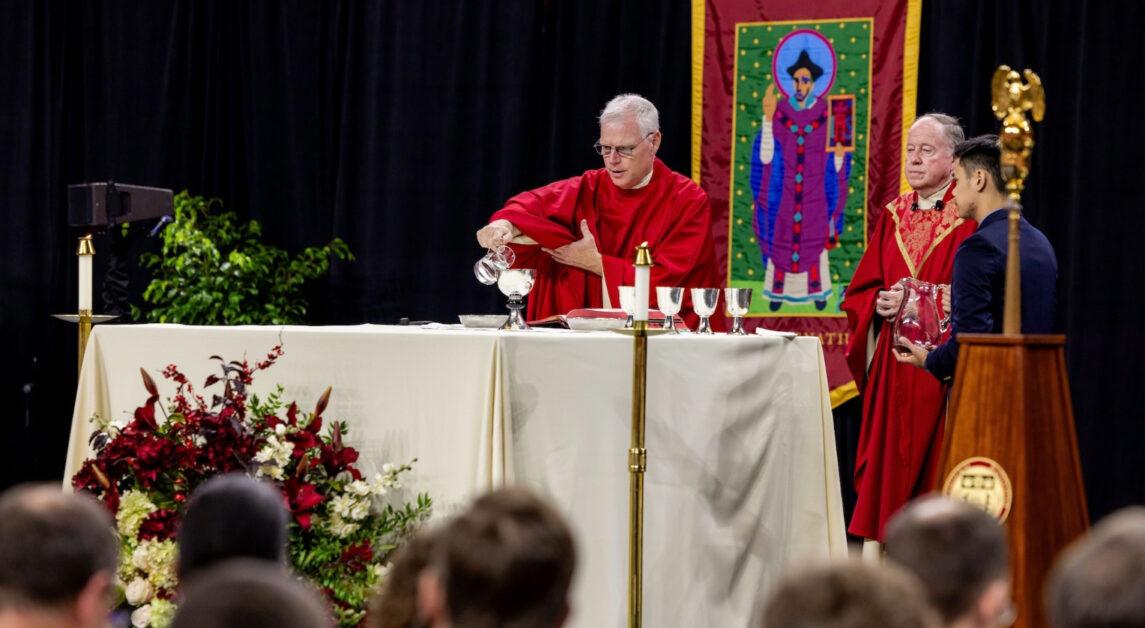D
anielle Ellerbe was seconds away from crossing the finish line of the 2013 Boston Marathon when a bomb detonated in the distance.
“I saw it but it was still far enough away,” said Ellerbe, a sophomore at the time and BC ’15. “I looked at a police officer who was standing along the race, and they didn’t respond or react. So I just went right back into go mode, like ‘Alright, let’s sprint. Let’s finish.’”
The second bomb went off about 10 seconds later, Ellerbe said.
“I was half a block away,” Ellerbe said. “I immediately lost my hearing. To be honest, my very initial reaction was, ‘Are you kidding me?’”
In milliseconds, Ellerbe said she saw debris flying all around her and realized everyone was in a panic. Alongside other runners, she trampled over the gates enclosing the race route and clutched the sides of a building.
“People were hysterically crying, calling for their loved ones,” she said. “After a few more seconds, I realized I had to run. I ran only about a block or so away, just to the first door that I could find. I spent about five minutes crouched under the bar at the Mandarin Oriental Hotel.”
As she waited, Ellerbe said she repeated Isaiah 41:10, the bible verse she had memorized to keep her motivated during the race, over and over in her head.
“I remember praying,” Ellerbe said. “I said ‘I’m not afraid to die, but I don’t want to die like this.’”
Ellerbe was eventually ushered out of the hotel, and she found the parents of another Boston College student.
“I walked them to try to find their son … eventually we went to Uno’s Pizza in Kenmore Square,” Ellerbe said. “That was when I first saw on the TVs, I saw the news headlines. That’s when I first realized, oh my gosh, the gravity of what happened, and that it was an actual bomb.”
Ellerbe said she broke down crying. The gravity of the situation had finally hit her.
A
t 2:49 p.m. on April 15, 2013, during the 117th Boston Marathon, two domestic terrorists detonated two pressure cooker bombs near the finish line in downtown Boston. Three people were killed and more than 280 were injured.
In the moments following the bombing, BC students and community members rushed to contact runners, friends, and family who were in the area. Less than an hour after the bombing, volunteers from BC’s Campus School created a Google doc listing the names of over 300 undergraduate students running the marathon and asked members of the BC community to update the document once they knew a runner was safe. By 7 p.m., almost all of the runners were accounted for.
Meanwhile, hundreds of runners who were near BC when the race stopped soon flooded Lower Campus. Students, administrators, and the Boston College Police Department quickly responded to support the influx of people.
Alex Warshauer, MCAS ’14, was the president of Eagle EMS (EEMS)—a student-run, emergency medical care provider—at the time. That day, Warshauer and other EEMS workers were stationed around campus to offer both students and runners typical support. When EEMS heard news of the bombing downtown, Warshauer and other workers had to act fast.
“The first thing that happened was that all the local EMS resources immediately left campus and went into the city,” Warshauer said. “So we were kind of left alone to be the sole providers for campus and the surrounding areas.”
The impromptu shutdown left hundreds of runners unexpectedly stranded at BC. While the finish line was set up and staffed to aid runners after they completed the marathon, Warshauer said these resources were not available at the Mile 21 mark near BC’s campus. EEMS quickly spoke with the BCPD chief of police to set up a response, he said.
“The finish line has enough water, warming blankets, medical tents, all ready to take care of runners,” Warshauer said. “The challenge there was that all of our normal EMS resources were pulled into the city. So we had to stabilize those patients ourselves. As an EMT we’re not set up for IVs and things like that, so it was a lesson in applying our skills and stretching them past what our normal scope of care is.”
Runners sought shelter in the Church of Saint Ignatius of Loyola on Lower Campus, Warshauer said. By working with the Office of Emergency Management, EEMS ensured food and drinks from the dining hall got to the runners.
“We’re just keeping the runners safe and warm until we know more about what’s going on,” said Catherine-Mary Rivera, then–associate director of the Office of Residential Life, at around 3:30 p.m. on the day of the bombing. “We just needed to get them into the church after they stopped running so abruptly.”
Michael Padulsky, LSEHD ’15 and BCSSW ’17, had just reached BC’s campus and Mile 21 of the race when a police officer told him the race was over. During his sophomore year, he decided to run the 2013 marathon to honor his brother Tim, who passed away from cancer in 2008. Padulsky said he and his sister, who ran alongside him, were shocked to hear they could not finish the race.
“At the top of Heartbreak Hill, that’s when really my heart broke because they said ‘Your race is over’ and I just remember kind of sitting down in the road just being like ‘Wow, I trained for months and months for this,’” Padulsky said.
Padulsky said he did not know exactly what was going on, but he began to worry—he had friends who were also running the marathon and his family members were waiting for him near the finish line. His aunt, who was also running the marathon, met him at his dorm room in Walsh, and they tried to contact their family members.
“The cell towers were overactive,” Padulsky said. “Things weren’t going through, so trying to send texts or calls wasn’t always the most reliable thing. Just trying to get a hold of everyone to make sure everyone was safe was really what the afternoon was.”
Once the Boston Police Department (BPD) said downtown Boston was safe enough for runners to return, buses provided by the Boston Athletic Association began transporting runners downtown, and by 7:30 p.m., most of the runners had left BC’s campus.
On a day when Warshauer and his team usually would have helped the occasional runner with shin splints or students who drank too much alcohol, EEMS ended up caring for about 500 stranded runners.
“Everything was moving so fast,” Warshauer said. “You have to kind of take yourself out of the chaos so you can focus on being effective and efficient. I don’t think it really hit me and the rest of the team until after everything had been cleared up.”


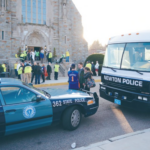
W
hen Ellerbe got back to campus, she, Padulsky, and a few other friends recounted the events of their days.
“That’s when Michael had the idea to do something to commemorate this evil that’s happened,” Ellerbe said. “We didn’t get to finish our marathon, so why don’t we make something, and so that’s when we created a Facebook group called ‘The Last 5.’”
Ellerbe and Padlusky planned to hold a commemorative walk to honor all who were affected by the tragedy. They called it “The Last 5,” referencing the last five miles of the marathon route between BC and the finish line.
“I think that our slogan was, in a way, ‘We decide when our marathon ends,’” Padulsky said.
At first, Ellerbe and Padulsky were worried not enough people would show up at the event.
“We were trying to get all of our friends to tell their friends,” Ellerbe said. “But the next morning, we had 20,000 people join our Facebook group, and it grew in insanity from there.”
The support Padulsky and Ellerbe received online was overwhelming and exciting, they said. To Padulsky, it was clear there was a demand for a commemorative event.
“There was such a need for people to process what had happened and that there wasn’t really a space for people to kind of understand what had happened,” Padulsky said. “So there was a clear need, but of course, you know, 20,000 people coming to a college campus during an event like that is, you know, something that wasn’t safe.”
BC’s dean of students and a representative from the BPD then called Ellerbe and Padulsky into a meeting.
“They said ‘We think it’s amazing, this thing that you have created, but it was growing by the thousands every hour,’” Ellerbe said. “They said, ‘Our city just went through an incredible tragedy, and we don’t have the infrastructure to support what ended up being a group of 47,000 people.’”
So, Ellerbe and Padulsky worked with the University’s administration and BCPD to plan another event.
“So I changed it from a walk to a vigil and had kind of started creating shirts and figuring out who’s going to speak and getting a stage and all of that and planning that process,” Padulsky said.
But Ellerbe and Padulsky’s new event was postponed again after BC’s campus went into lockdown for over 12 hours on Friday as the BPD and the FBI searched Boston and surrounding towns for the suspected perpetrators of the attack.
Then-Governor Deval Patrick issued a “shelter in place” order for all of Boston, Watertown, Newton, Cambridge, Belmont, and Waltham. At 6:28 a.m. on Friday, the BC community received a text from BCPD instructing everyone to stay inside.
“Due to public safety concerns, BC is closed and classes are canceled until further notice,” the text read. “Remain indoors.”
Joseph Citera, a BC campus minister and BC ’13, was a residential assistant (RA) in Cheverus Hall at the time. During the lockdown, he said the University tasked RAs with keeping students indoors and safe.
“People were just stuck inside their environment, in their dorm rooms or in their residence halls, and our responsibility was to make sure that people were following that, but also, more importantly, be there for them if they needed something,” Citera said.
He distinctly remembers RAs leading residents to and from the dining halls. Citera also said he and another RA tried to lighten the mood during the lockdown by making pancakes for their residents.
“He and I had a bunch of food leftover from a whole program that we did where we were making pancakes,” Citera said. “We had all this pancake batter left over, so we took the griddles out and started making pancakes, and that was cool.”
At 6:30 p.m., BCPD sent out an alert saying the lockdown was lifted, and around 8:45 p.m., BPD announced that a suspect was in custody. Citera said the student body’s immediate response was to celebrate.
“I think that BC students will find any excuse to celebrate something, and I think that BC students did that,” Citera said.
Immediately after the news broke, students rushed out of their dorms. Students in the Mods waved American flags around as they chanted “USA, USA.”



O
n Friday, May 3, Ellerbe and Padulsky finally held their Last 5 Walk event. Padulsky said around 1,000 people came to the Chestnut Hill Reservoir to show their support and join the walk. They designed blue and yellow t-shirts for the event and donated the funds to BC alumni who were affected by the bombing.
Through the event, Padulsky said BC community members were able to connect and talk about the bombing.
“I think that when you’re a college student, there’s not always a space and the opportunity to come together as a big group to really process a tragedy, and our hope was to do that,” Padulsky said.
Ellerbe said she feels both a sense of gratitude and pride for the way the BC community and Boston came together following the attack.
“Boston has grit and tenacity unlike any other city,” Ellerbe said. “It was an incredible time of seeing the city band together around something that was so traumatic.”
Beyond The Last 5 walk, the BC community united to support the BC alumni who had been injured at the site of the bombing through several online crowdsourcing fundraisers. One of those individuals was Patrick Downes, BC ’05, who was with his wife, Jessica Kensky, cheering on runners near the finish line when the bomb went off. Both became amputees after—Downes lost one leg and Kensky lost both.
Before he and his wife knew the extent of their injuries, Downes said the BC community already started to raise money to help them. This support helped Downes and Kensky pay for care at Walter Reed Army Medical Center, prosthetic legs, and renovations to make their home more accessible, he said.
“When we started to become more conscious of what had happened in our injuries, and then realized how people were springing into action to help us,” Downes said. “It frankly wasn’t even about the money at the time. I just couldn’t believe that people were responding in the way that they were, that they were doing so much to care for us.”
As Downes and Kensky processed what had happened and came to terms with their injuries, Downes said he felt an abundance of support from the BC community and beyond.
“I’ve always been someone who has been loved by his parents and brother and family and friends, but this was the love like I had never experienced before, and it was a really overpowering feeling despite all the other really powerful feelings that were present at the time,” Downes said.
After participating in a running program for amputees at Walter Reed, Downes ran the Boston Marathon in 2016. He fundraised for the BC Strong fund, a scholarship started by four of Downes’ friends—Michael Hundgen, BC ’05, Kevin Collins, BC ’05, Grace Simmons Zuncic BC ’05, and Liz Stowe Fennell, BC ’05—in honor of Downes and his wife.
“It wasn’t really about the money at first, it was more just about wanting to take the Boston strong spirit that Jess and I had received and pay it forward to students with disabilities on the campus of BC,” Downes said. “It has grown into that and then some”
When Downes and his friends contacted BC to share their idea, Downes said BC explained they could raise $25,000 and give a one-time gift to a student, but his friends were committed to raising more.
“They were really determined to make it more of a sustainable scholarship fund to be able to give gifts to students in perpetuity, and so they committed to raising at least $250,000 to endow the scholarship,” Downes said.
Since 2017, BC has awarded the scholarship annually to a BC student with a permanent physical disability who has overcome adversity. Downes said the BC Strong movement has pushed the community to be more thoughtful about accessibility and support students who advocate for increased accessibility.
“So for Jess and me it’s been an incredible gift that keeps giving back to us every year for us to be able to meet these students, get to know them, support their time at BC and really learn a lot from them in the ways that they become their own advocates,” Downes said.


I
t is hard to imagine that the bombing happened 10 years ago, Padulsky said.
“I can’t believe it was 10 years ago, honestly, and in a way it feels longer, but then also like it was just yesterday,” Padulsky said. “I think that has to do a lot with trauma. I mean, when you go through something like that you separate yourself.”
Warshauer said the marathon bombing had a significant influence on his life—he is currently finishing up his fifth year of general surgery residency at the University of Pennsylvania, with plans to become a trauma surgeon.
“I definitely came to BC knowing I wanted to go into medicine, specifically trauma surgery, but this experience sort of solidified that for me,” Warshauer said. “An experience like that puts into perspective how much of an impact you can have.”
The past 10 years have proved to Downes that the friendships he formed while at BC are lifelong bonds, he said.
“When I got into BC, it was one of the best days of my life, but I still had no idea about the kind of impact that it would have on my life,” Downes said. “It makes me realize that those friendships that were born out of those experiences at BC really did turn into lifelong friendships that transcend parties in the Mods or tailgates.”
Although the tragedy and fear that struck Boston 10 years ago was intensely dark, Downes said he has witnessed just how much humans can step up for each other in times of need. This ferociously supportive spirit should be extended to all types of people in all of their struggles, he said.
“In this weird twist of fate, out of something that was so evil and destructive, I got this glimpse into the really compassionate depths of humans,” Downes said. “It has supercharged me at times when I would otherwise have been really quite down and out. So I would love to find a way to bottle that all up and be able to give it to other people in their times of need as well.”

